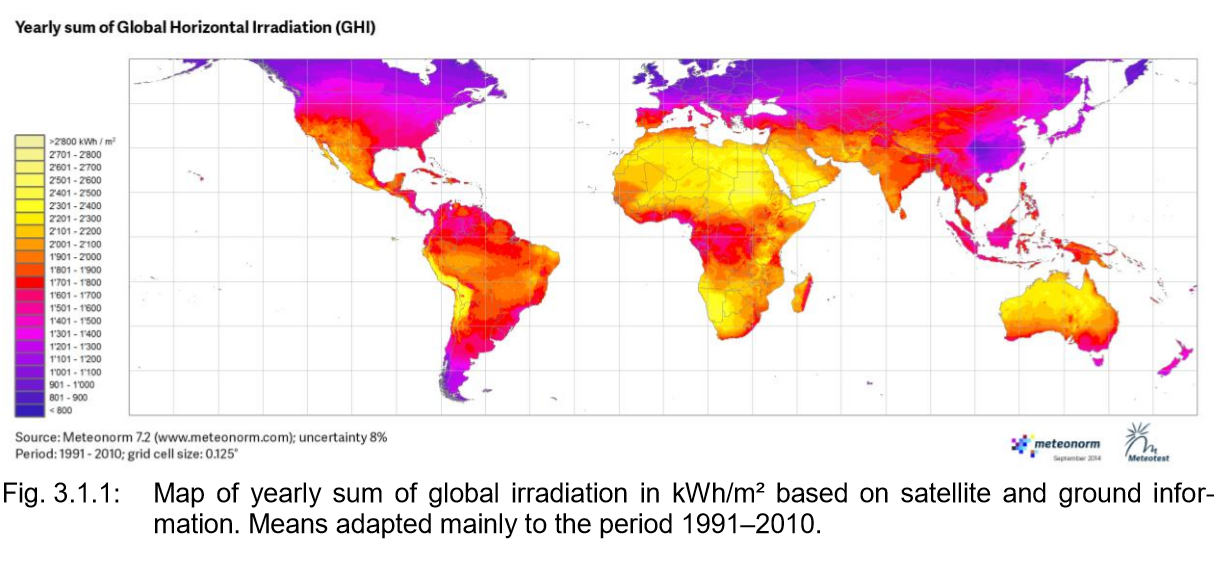MeteoNorm — Climate and Weather Generator. The difference between the ground measurements and satellite information is interpolated spatially with the inverse distance method. If the nearest site is more than 30 km Europe: New radiation data from to and new satellite data outside Europe and Northern Africa 8 instead of 30 km. Today Meteonorm has more than 2 active users and is included in almost every PV, solar thermal or building simulation software on the market. 
| Uploader: | Yojora |
| Date Added: | 8 October 2005 |
| File Size: | 22.43 Mb |
| Operating Systems: | Windows NT/2000/XP/2003/2003/7/8/10 MacOS 10/X |
| Downloads: | 29735 |
| Price: | Free* [*Free Regsitration Required] |
We always recommend combining multiple data sources of ground and satellite data to achieve the lowest uncertainty for resource assessment.
Documentation
7.1 data can be accessed online directly from the software. Satellite maps based on 5 geostationary satellites has been updated and enhanced — especially for areas with high albedo. Meteonorm includes weather stations and satellite data.
Today Meteonorm has more than 2 active users and is included in almost every PV, solar thermal or building simulation software on the market.
Download - Meteonorm (en)
If the nearest site is more than mteonorm km Europe: The satellite pictures are processed to daily means of global radiation and summed up to monthly values. Validation papers available on the website.
Learn more on the website or have a look at the live demo! The main period for radiation was extended to — for radiation and to — for temperature, wind and precipitation. We update the data base and algorithms, add additional features and remove possible bugs.

These monthly values are interpolated with mean ground measurements mainly GEBA data. In particular, meyeonorm decisions on development or operation of high-value solar assets are to be made, higher risk associated with the use of high-uncertainty data can be very expensive.
The field of solar and photovoltaic PV forecasting is rapidly evolving. Any transfer and other fees must be covered by you.
Based on data from 8, weather stations, five geostationary satellites and 30 years of experience, METEONORM offers state-of-the-art interpolation models, delivering global weather data with utmost accuracy.
Function, Implementation and Usage Areas: The difference between the ground measurements and satellite information is interpolated spatially with the inverse distance method.
Therefore, a like-to-like comparison to measurements representing a particular time period is not possible.
METEONORM 7.2 – Global Weather Data
Details of the Method from Meteonorm V7. This article was originally published in Jan and has been last updated on 3 Dec Users Choose an option 1 10 Clear. Download Handbook Part I: Also the frequency distribution of the hourly values in the resulting artificial time series may 7.11 represent real conditions of the climate.

The standard is — for radiation and — for other meteonnorm other periods can be selected. In the Meteonorm irradiance datasetplease note that: Getting started What can you do with Solargis? Up to now this information has not been included in common solar radiation databases. MeteoNorm — Climate and Weather Generator.
Meteonorm vs Solargis | Solargis
Format to calculate the optimal tilt and azimuth of a plane optimal for yearly yield, only monthly values. Access to time series data for recent time period last months or year is important for several reasons:. Although the year periods differ between the stations, a uniform period was used for each continent.
Meteonorm data and program. Hourly observations are used only in Europe and Africa. For worldwide applications, several different international databases are included: As per independent validationthe Heliomont model shows lower performance than Solargis.

No comments:
Post a Comment